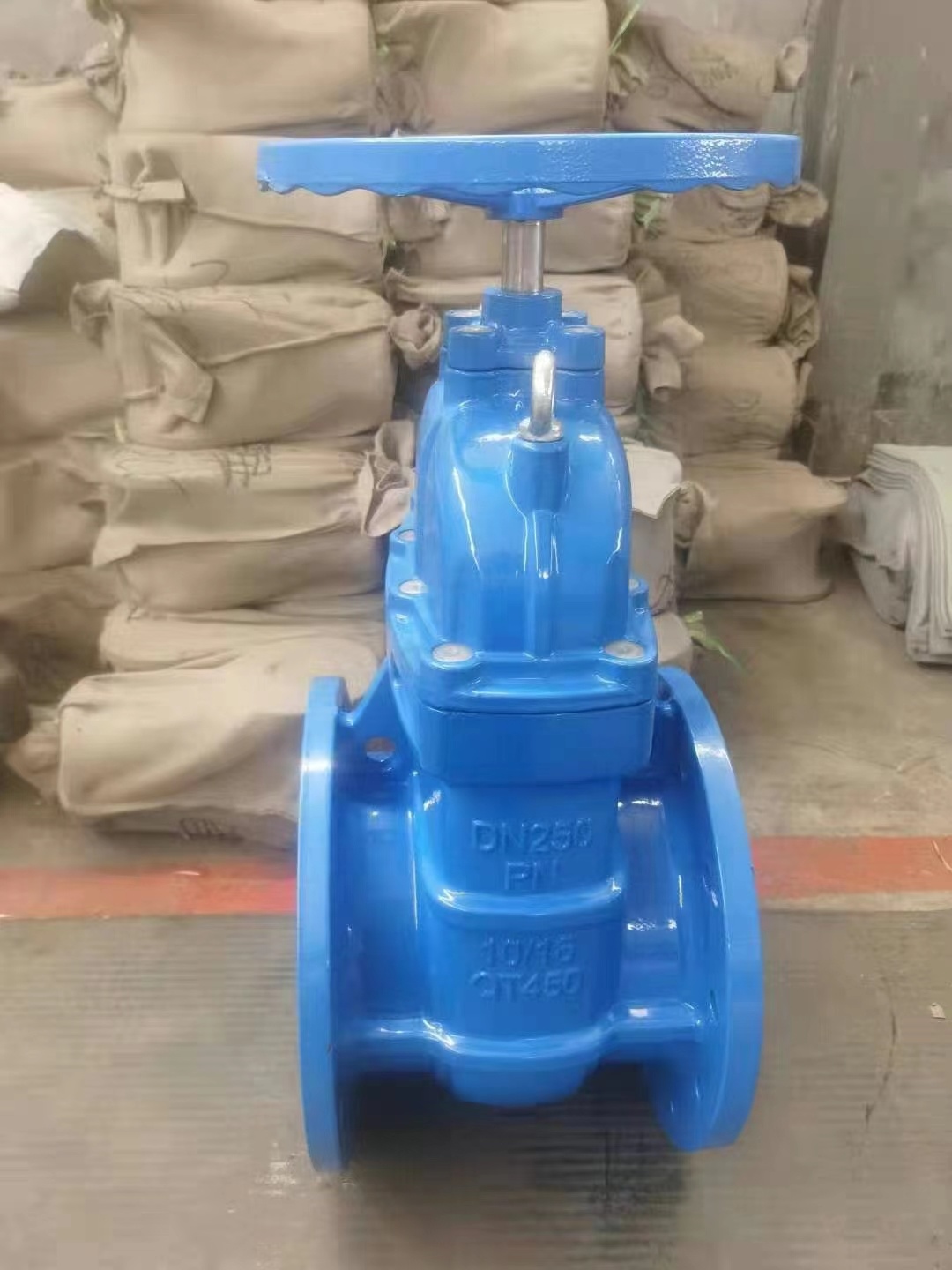The correct usage method of hard sealed gate valve
Release Time:
Jul 25,2025


The correct usage method of hard sealed gate valve
1、 Preparation before operation
Familiar with valves: Understand the specifications and parameters of valves (such as pressure rating PN/Class, temperature range, diameter DN/inch), structural form (open stem/concealed stem), flow direction indication, medium compatibility, and operating torque information.
Check valve status:
Appearance inspection: Check the valve body, flange connection, valve stem packing cover, etc. for obvious damage, leakage, or severe corrosion.
Flow direction inspection: Confirm that the flow direction of the medium is consistent with the flow arrow marked on the valve body. Hard sealed gate valves are usually bi-directional sealed, but there may be recommended flow directions during design.
Position confirmation: Clearly determine whether the valve is currently in the open or closed state (for rising stem gate valves, check the valve stem extension, and for hidden stem gate valves, check the handwheel position or indicator).
Pressure check: crucial! Before operation, it is necessary to confirm that the system pressure at the front and back ends of the valve has been balanced or reduced to near zero. Operating hard sealed gate valves under pressure is the most common cause of damage to the sealing surface, valve stem jamming, and even valve scrapping. The hard sealing surface is easily scratched or embedded with impurities when forcibly rubbed and closed or opened under high pressure difference.
Clear obstacles: Ensure sufficient operating space and no obstacles around the handwheel or actuator.
Preparation tools: Prepare appropriate wrenches (fixed wrenches, F-wrenches, etc.) or operating tools for the actuator. It is strictly prohibited to use force rods (such as long sleeves)! The design of hard sealed gate valves has a specified operating torque, and excessive torque force operation may break the valve stem, damage the valve stem nut or sealing surface.
🛠 2、 Open valve operation
Counter clockwise rotation: facing the handwheel or actuator (such as a handle), counterclockwise rotation opens the valve.
Slow operation:
When starting to rotate, the movement should be slow and steady.
When the gate is about to leave the valve seat or approach the fully open position, it is necessary to slow down the speed to avoid the gate from impacting the valve seat or body.
Fully open in place: For open stem gate valves, raise the valve stem to the highest point; For concealed gate valves, the handwheel or indicator reaches the fully open mark position. Do not over rotate! Forcefully twisting to the bottom may damage the internal limit mechanism.
Texture resistance: feel the change in resistance during operation. The resistance should be uniform. If the resistance suddenly increases or decreases at a certain point, the operation should be stopped and the cause checked (such as medium crystallization, foreign objects or damage inside the valve).
Confirm fully open: Confirm that the valve is fully open by observing the valve stem position, indicator, or system parameters such as flow rate and pressure difference. When fully open, the gate passage is aligned with the inner diameter of the pipeline, resulting in minimal resistance.
🔒 3、 Close valve operation
Clockwise rotation: Facing the handwheel or actuator (such as a handle), clockwise rotation closes the valve.
Slow operation:
When starting to rotate, the movement should be slow and steady.
When the gate is about to come into contact with the valve seat (usually a significant increase in resistance can be felt during the last 1/4 to 1 turn of the handwheel), it is necessary to significantly slow down the speed and apply gentle force. This is the most critical moment to protect the hard seal surface! Forcefully closing quickly can cause severe impact and friction on the sealing surface, resulting in irreversible damage (scratches, indentations).
Fully closed in place: Apply appropriate force (refer to the closing torque provided by the manufacturer) to gently press the gate onto the valve seat until the handwheel can no longer rotate (or reaches the specified number of turns/torque). Avoid excessive tightening! Excessive closing force can lead to:
The gate is deformed or the sealing surface is crushed.
The valve stem bends due to excessive force.
The wear of the valve stem nut or transmission thread intensifies.
The valve may have difficulty opening or even get stuck next time.
Confirm closure: Confirm that the valve is fully closed (the stem of the rising stem gate valve is lowered to the lowest point, and the handwheel or indicator of the hidden stem gate valve is in the closed position). Check for any signs of leakage downstream of the valve (under permissible pressure testing conditions).
4、 Operation precautions
Strictly prohibit operation under pressure: This is the golden rule for operating hard sealed gate valves! The switching operation can only be carried out when the pressure before and after the valve is basically balanced (close to zero pressure difference). Before opening in the closed state or closing in the open state, it is necessary to release the pressure in the chambers on both sides of the valve through system bypass, pressure relief valve, and other methods. The system design should consider pressure relief measures.
Prohibit the use of force rods: The torque required for operating hard sealed gate valves is relatively large compared to soft sealed gate valves, but it has been considered in the design. It is absolutely forbidden to add sleeves, steel pipes, or other extension arms to wrenches or handwheels to forcibly open or close them. This will inevitably lead to excessive torque and damage to the valve (stem breakage is the most common).
Slowly and evenly apply force: Speed is key, especially before and after the gate contacts the valve seat. Impatience and rough handling are the main causes of damage to hard sealing surfaces.
Principle of fully open and fully closed: Hard sealed gate valves are designed for fully open (minimum flow resistance) or fully closed (sealed) states. Avoid using it as a regulating valve and keeping it in a semi open state for a long time! When partially opened, high-speed fluid directly flushes the edge of the gate sealing surface and the valve body flow channel, causing severe erosion and wear, and damaging the sealing performance.
Exception handling: If encountering abnormal jamming or abnormal increase in resistance during the operation process:
Stop the operation immediately!
Try a small reverse rotation (about 1/4 turn), and then try closing/opening again.
Confirm again whether the pressure has been released.
Check if the valve is stuck due to thermal expansion and contraction caused by temperature changes (try again when the temperature stabilizes).
Consider whether there are impurities or blockages inside (which need to be disassembled or flushed under safe conditions).
If the valve is completely stuck, do not use violence and contact professional personnel for handling.
Regular maintenance:
Valve stem lubrication: Regularly (based on operating conditions and frequency of use) inject suitable high-temperature and high-pressure lubricating grease (such as molybdenum disulfide lithium based grease) into the valve stem nut/thread and packing through the oil nozzle on the valve stem packing cover to reduce friction, prevent jamming and wear. The lubrication frequency needs to be increased under high temperature conditions.
Packing inspection and adjustment: Observe whether there is any leakage at the packing point. If there is a slight leakage, the packing gland nuts can be tightened evenly and moderately (usually diagonally in pairs), and the amount of tightening each time should not be too large. If the leakage is severe or the tightening is ineffective, the machine needs to be stopped to replace the packing.
Cleaning and anti-corrosion: Keep the exterior of the valve clean, especially the threaded part of the valve stem, to prevent dust and impurities from entering. If necessary, carry out anti-corrosion treatment.
Storage: Backup valves that are not in use for a long time should be kept in a slightly open state (not completely closed or fully open), stored clean and dry, and sealed with blind plates or protective covers at the inlet and outlet. Avoid long-term compression or exposure of the sealing surface to corrosive environments.
sale@cnbestvalve.com WhatsApp: +8613333075295





